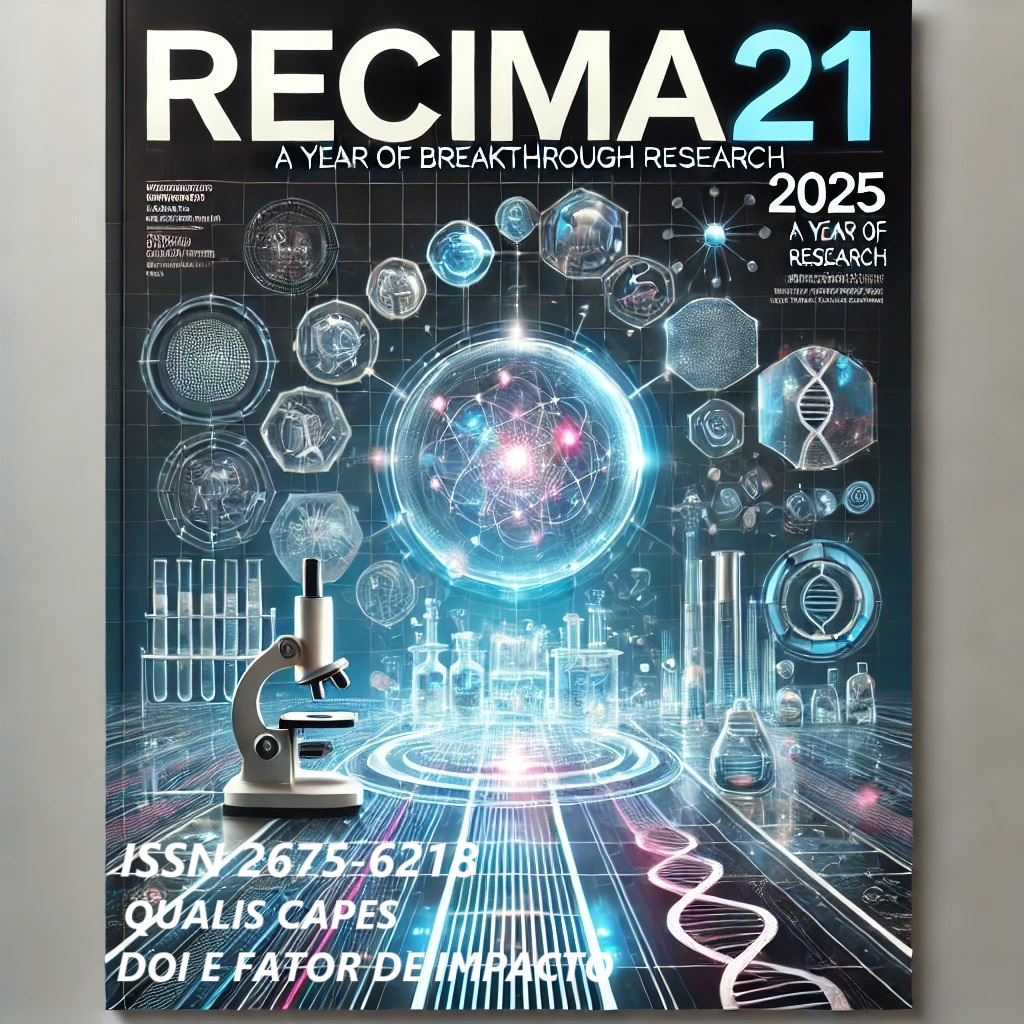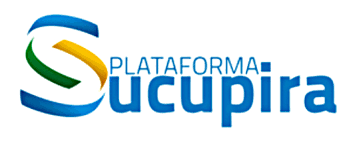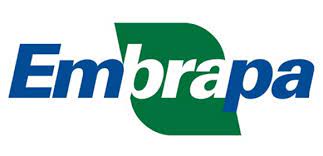SAFETY IN ENVIRONMENTS WITH HAZARDOUS CHEMICAL SUBSTANCES: A LITERATURE REVIEW
DOI:
https://doi.org/10.47820/recima21.v6i2.6191Keywords:
Chemical industry. Accidents. Protection. Safety. Chemical substances.Abstract
The handling of hazardous chemical substances in work environments poses significant risks to occupational health and safety, including intoxications, explosions, and severe diseases. These risks affect a wide range of sectors, from large industries to laboratories and healthcare services. Exposure is associated with high mortality rates and work-related illnesses, highlighting the need for effective risk mitigation strategies. Reviewing and improving technologies, regulations, and best practices is crucial to fostering safer and more sustainable environments. Data collected from the literature using platforms such as PubMed, Scopus, SciELO, and Google Scholar were utilized for this narrative review. Chemical substances represent significant occupational risks in sectors such as the chemical industry, factories, laboratories, and agriculture, potentially causing intoxications, respiratory diseases, and neoplasms. National and international regulations guide safety measures, such as the mandatory use of Personal Protective Equipment (PPE) and Collective Protective Equipment (CPE), which are essential to minimizing exposure. These strategies aim to protect workers' health and prevent accidents in environments with hazardous chemicals. Advances in occupational health and safety include stricter regulations and emerging technologies that help reduce accidents and fatalities. Innovations such as real-time monitoring enhance protection but require specialized training and risk management, including cybersecurity. Moreover, the impacts of climate change and pollution on health emphasize the urgency of effective public policies and continuous education, which are essential to ensuring safe and sustainable work environments.
Downloads
References
ABREU, N. L. et al. Mudanças de uso da terra e emissão de gases de efeito estufa: uma explanação sobre os principais drivers de emissão. Ciência Ambiente & Biologia, v. 47, p. 1-10, 2023. Disponível em: https://www.scielo.br/j/cab/a/NDzFnKKntQLXqGd3hF6mTnj/?format=pdf&lang=pt.
ADYANTHAYA, S.; JOSE, M. Quality and safety aspects in histopathology laboratory. Journal of Oral and Maxillofacial Pathology, v. 17, n. 3, p. 402-407, 2013. DOI: 10.4103/0973-029X.125207. DOI: https://doi.org/10.4103/0973-029X.125207
AMERICAN INSTITUTE OF CHEMICAL ENGINEERS. Essential Practices for Managing Chemical Reactivity Hazards. New York: Wiley, 2023.
ARANTES, M. V. C.; GUNTER, W. M. R. Boas práticas sustentáveis de gestão de resíduos químicos em instituições públicas de ensino superior. Química Nova, v. 46, n. 7, p. 724-730, 2023. DOI: 10.21577/0100-4042.20230034. DOI: https://doi.org/10.21577/0100-4042.20230034
ARMSTRONG, V.; KARYAKINA, N. A.; NORDHEIM, E.; ARNOLD, I.; KREWSKI, D. Overview of REACH: Issues Involved in the Registration of Metals. Neurotoxicology, v. 83, p. 186-198, 2021. DOI: 10.1016/j.neuro.2020.01.010. DOI: https://doi.org/10.1016/j.neuro.2020.01.010
ASGEDOM, A. A.; BRÅTVEIT, M.; MOEN, B. E. Knowledge, attitude and practice related to chemical hazards and personal protective equipment among particleboard workers in Ethiopia: a cross-sectional study. BMC Public Health, v. 19, n. 1, p. 440, 2019. DOI: 10.1186/s12889-019-6807-0. DOI: https://doi.org/10.1186/s12889-019-6807-0
BEGEMANN, K.; GLASER, N.; DESEL, H. Vergiftungen durch chemische Stoffe und Produkte [Poisoning by chemical substances and products]. Bundesgesundheitsblatt Gesundheitsforschung Gesundheitsschutz, v. 62, n. 11, p. 1346-1353, 2019. DOI: 10.1007/s00103-019-03033-6. DOI: https://doi.org/10.1007/s00103-019-03033-6
BIERMANN, F. Earth system governance: World politics in the post-environmental age. [S. l.: s. n.], 2023. Disponível em: https://dspace.library.uu.nl/bitstream/handle/1874/426832/10.4324_9781003008873_25_chapterpdf.pdf?sequence=1. DOI: 10.4324/9781003008873-25. DOI: https://doi.org/10.4324/9781003008873-25
BOSTAN, I. Harmonisation of standards related to limiting chemical risk associated with work processes. Annals of Agricultural and Environmental Medicine, v. 20, n. 3, p. 460-464, 2013.
BRASIL. Ministério do Trabalho. Norma Regulamentadora nº 26: Sinalização de Segurança. Brasília: Ministério do Trabalho, 2021.
CARDER, M.; SEED, M. J.; MONEY, A.; AGIUS, R. M.; VAN TONGEREN, M. Occupational and work-related respiratory disease attributed to cleaning products. Occupational and Environmental Medicine, v. 76, n. 8, p. 530-536, 2019. DOI: 10.1136/oemed-2018-105646. DOI: https://doi.org/10.1136/oemed-2018-105646
CHEDIK, L.; BAYBEKOV, S.; COSNIER, F.; MARCOU, G.; VARNEK, A.; CHAMPMARTIN, C. An update of skin permeability data based on a systematic review of recent research. Scientific Data, v. 11, n. 1, p. 224, 2024. DOI: 10.1038/s41597-024-03026-4. DOI: https://doi.org/10.1038/s41597-024-03026-4
CRUZ, L. E.; SANTOS, V. M. Técnicas adequadas de descarte de resíduos biológicos e químicos. Braz J Implant Health Sci., v. 6, n. 11, p. 1200-1219, 2024. Disponível em: https://bjihs.emnuvens.com.br/bjihs/article/view/3966. DOI: https://doi.org/10.36557/2674-8169.2024v6n11p1200-1219
DAMALAS, C. A.; ELEFTHEROHORINOS, I. G. Pesticide exposure, safety issues, and risk assessment indicators. International Journal of Environmental Research and Public Health, v. 8, n. 5, p. 1402-1419, 2011. DOI: 10.3390/ijerph8051402. DOI: https://doi.org/10.3390/ijerph8051402
DHARA, V. R. Investigating the Medical Aspects of the World's Worst Industrial Disaster. New Solutions, v. 33, n. 2-3, p. 113-118, 2023. DOI: 10.1177/10482911231190583. DOI: https://doi.org/10.1177/10482911231190583
ELGABRY, M. Rumo à biossegurança cibernética por design: uma abordagem experimental para o design e desenvolvimento da Internet das Coisas Médicas. Crime Science, v. 12, p. 3, 2023. DOI: 10.1186/s40163-023-00181-8. Disponível em: https://doi.org/10.1186/s40163-023-00181-8. DOI: https://doi.org/10.1186/s40163-023-00181-8
EUROPEAN CHEMICALS AGENCY (ECHA). CLP Regulation: Training material on classification of mixtures under the CLP Regulation [Internet]. 2014 May 19-20. Available from: https://www.reach-metals.eu/uploads/pdf/clp/training-.
EUROPEAN PARLIAMENT. Regulation (EC) No 1907/2006 of the European Parliament and of the Council. REACH Regulation. Official Journal of the European Union, 2023. Available from: https://eur-lex.europa.eu/.
FEVRE, M. C.; VINCENT, C.; PICARD, J.; VIGHETTI, A.; CHAPUIS, C.; DETAVERNIER, M.; ALLENET, B.; PAYEN, J. F.; BOSSON, J. L.; ALBALADEJO, P. Reduced variability and execution time to reach a target with a needle GPS system: Comparison between physicians, residents and nurse anaesthetists. Anaesthesia, Critical Care & Pain Medicine, v. 37, n. 1, p. 55-60, 2018. DOI: 10.1016/j.accpm.2016.05.008. DOI: https://doi.org/10.1016/j.accpm.2016.05.008
FIOCRUZ. Biossegurança e bioproteção, atuação da Fiocruz na qualidade e segurança das pesquisas e de atividades envolvendo agentes biológicos. Rio de Janeiro: Fiocruz, s. d. Disponível em: https://portal.fiocruz.br/sites/portal.fiocruz.br/files/documentos_2/folder_ctbio_web_versao.pdf.
FLOR-UNDA, O.; FUENTES, M.; DÁVILA, D.; RIVERA, M.; LLANO, G.; IZURIETA, C.; ACOSTA-VARGAS, P. Innovative Technologies for Occupational Health and Safety: A Scoping Review. Safety, v. 9, n. 2, p. 35, 2023. Available from: https://doi.org/10.3390/safety9020035. DOI: https://doi.org/10.3390/safety9020035
GARRALAGA, M. P.; LOMBA, L.; ZURIAGA, E.; SANTANDER, S.; GINER, B. Key Properties for the Toxicity Classification of Chemicals: A Comparison of the REACH Regulation and Scientific Studies Trends Applied Sciences, v. 12, n. 21, p. 11710, 2022. DOI: 10.3390/app122211710. DOI: https://doi.org/10.3390/app122211710
GENG, X.; LV, Y.; ZHAO, L.; WANG, Y. Measurement and Simulation of Risk Coupling in Port Hazardous Chemical Logistics. International Journal of Environmental Research and Public Health, v. 20, n. 5, p. 4008, 2023. DOI: 10.3390/ijerph20054008. DOI: https://doi.org/10.3390/ijerph20054008
GUSEVA CANU, I.; FAUST, S.; CANIONI, P.; COLLOMB, P.; SAMSON, E.; LAURIER, D. Attitude towards personal protective equipment in the French nuclear fuel industry. Arhiv za Higijenu Rada i Toksikologiju, v. 64, n. 2, p. 99-107, 2013. DOI: 10.2478/10004-1254-64-2013-2289. DOI: https://doi.org/10.2478/10004-1254-64-2013-2289
HE, Z.; WENG, W. Synergic effects in the assessment of multi-hazard coupling disasters: Fires, explosions, and toxicant leaks. Journal of Hazardous Materials, v. 388, p. 121813, 2020. DOI: 10.1016/j.jhazmat.2019.121813. DOI: https://doi.org/10.1016/j.jhazmat.2019.121813
HRVAT, N. M.; KOVARIK, Z. Counteracting poisoning with chemical warfare nerve agents. Arhiv za Higijenu Rada i Toksikologiju, v. 71, n. 4, p. 266-284, dez. 2020. DOI: 10.2478/aiht-2020-71-3459. DOI: https://doi.org/10.2478/aiht-2020-71-3459
HULME, P. E. et al. Emerging advances in biosecurity to underpin human, animal, plant, and ecosystem health. iScience, v. 26, n. 9, p. 107462, jul. 2023. DOI: 10.1016/j.isci.2023.107462. Disponível em: https://doi.org/10.1016/j.isci.2023.107462. DOI: https://doi.org/10.1016/j.isci.2023.107462
ICHIHARA, G.; MATSUKAWA, T.; KITAMURA, F.; YOKOYAMA, K. Risk factors for occupational accidents in agricultural enterprises in Japan. Industrial Health, v. 57, n. 5, p. 627-636, 2019. DOI: 10.2486/indhealth.2017-0218. DOI: https://doi.org/10.2486/indhealth.2017-0218
KANG, S. K.; KIM, E. A. Occupational diseases in Korea. Journal of Korean Medical Science, v. 25, supl., p. S4-S12, 2010. DOI: 10.3346/jkms.2010.25.S.S4. DOI: https://doi.org/10.3346/jkms.2010.25.S.S4
KEZIC, S.; NUNEZ, R.; BABIĆ, Ž.; HALLMANN, S.; HAVMOSE, M. S.; JOHANSEN, J. D.; JOHN, S. M.; MACAN, M.; SYMANZIK, C.; UTER, W.; WEINERT, P.; TURK, R.; MACAN, J.; VAN DER MOLEN, H. F. Occupational exposure of hairdressers to airborne hazardous chemicals: A scoping review. International Journal of Environmental Research and Public Health, v. 19, n. 7, p. 4176, 2022. DOI: 10.3390/ijerph19074176. DOI: https://doi.org/10.3390/ijerph19074176
KLITZKE, E. F.; KETZER, F.; ALMEIDA, M. O. P.; CALISTO, J. F. F.; WANCURA, J. H. C.; RODRIGUES, C. A.; OLIVEIRA, J. V.; DAL MAGRO, J. Adsorption of methane by modified-biochar aiming to improve the gaseous fuels storage/transport capacity: process evaluation and modeling. Environmental Science and Pollution Research International, v. 31, n. 36, p. 49285-49299, ago. 2024. DOI: 10.1007/s11356-024-34465-6. DOI: https://doi.org/10.1007/s11356-024-34465-6
KRZEMIŃSKA, S.; IRZMAŃSKA, E. Zagrożenie olejami mineralnymi na stanowiskach pracy oraz nowe rozwiązania polimerowych materiałów ochronnych w wybranych środkach ochrony indywidualnej [Exposure to mineral oils at worksites and novel solutions for polymer protective materials in selected personal protective equipment]. Medycyna Pracy, v. 62, n. 4, p. 435-443, 2011.
KWON, S. C.; ROH, S. Y.; LEE, J. H.; KIM, E. A. Compensation for occupational diseases by chemical agents in Korea. Journal of Korean Medical Science, v. 29, supl., p. S78-S84, 2014. DOI: 10.3346/jkms.2014.29.S.S78. DOI: https://doi.org/10.3346/jkms.2014.29.S.S78
LAMICHHANE, Bishal; NEUPANE, Navaraj. Improved Healthcare Access in Low-resource Regions: A Review of Technological Solutions. [S. l.: s. n.], 2022. Disponível em: https://doi.org/10.48550/arXiv.2205.10913.
LESO, V.; FONTANA, L.; IAVICOLI, I. Technological innovation in occupational safety and health: A focus on Industry 5.0. International Journal of Environmental Research and Public Health, v. 20, n. 10, p. 1368, 2023. DOI: 10.3390/ijerph20101368.
LEVEL ONE SOLUTIONS. NR26: Sinalização de segurança e identificação de produtos químicos. [S. l.]: Level One Solutions, 2023. Disponível em: https://levelonesolutions.com.br/nr26-sinalizacao-de-seguranca-e-identificacao-de-produtos-quimicos/. Acesso em: 5 dez. 2024.
LÓPEZ-RODRÍGUEZ, J. D.; RÍOS-CASTILLO, R. Emerging issues in regulatory science and technology. Journal of Regulatory Science, v. 15, n. 4, p. 35-45, 2021.
MACHADO, M. H. et al. Condições de trabalho e biossegurança dos profissionais de saúde e trabalhadores invisíveis da saúde no contexto da COVID-19 no Brasil. Ciência & Saúde Coletiva, v. 28, n. 10, p. 2809–2822, 2023. DOI: 10.1590/1413-812320232810.10072023. Disponível em: https://doi.org/10.1590/1413-812320232810.10072023. DOI: https://doi.org/10.1590/1413-812320232810.10072023
MAFFINI, M. V.; RAYASAM, S. D. G.; AXELRAD, D. A.; et al. Advancing the science on chemical classes. Environmental Health, v. 21, supl. 1, p. 120, 2023. DOI: 10.1186/s12940-022-00919-y. DOI: https://doi.org/10.1186/s12940-022-00919-y
MASSOUBRE, B. Les risques chimiques au laboratoire de biologie médicale [Chemical risks in the medical biology laboratory]. Annales de Biologie Clinique (Paris), v. 81, n. 4, p. 356-364, 2023. DOI: 10.1684/abc.2023.1823. DOI: https://doi.org/10.1684/abc.2023.1823
McCORD, G. C.; BHARADWAJ, P.; McDOUGAL, L.; KAUSHIK, A.; RAJ, A. Long-term health and human capital effects of in utero exposure to an industrial disaster: a spatial difference-in-differences analysis of the Bhopal gas tragedy. BMJ Open, v. 13, n. 6, e066733, 2023. DOI: 10.1136/bmjopen-2022-066733. DOI: https://doi.org/10.1136/bmjopen-2022-066733
McGEOUGH, C. P.; MEAR, S. J.; JAMISON, T. F. A Call for Increased Focus on Reproductive Health within Lab Safety Culture. Journal of the American Chemical Society, v. 143, n. 32, p. 12422-12427, 2021. DOI: 10.1021/jacs.1c03725. DOI: https://doi.org/10.1021/jacs.1c03725
MINISTÉRIO DO TRABALHO. Norma Regulamentadora NR-26: Sinalização de Segurança. Brasilia: Ministério do Trabalho, 2020.
MÖCKEL, L.; MOHAMMADI, H.; FARHANG DEHGHAN, S. Editorial: The use of emerging technologies in occupational health and safety, volume II. Safety, v. 9, n. 6, p. 100, 2023. Available from: https://doi.org/10.3390/safety9060100. DOI: https://doi.org/10.3389/fpubh.2023.1200044
MOROVÁ, M.; KRŠKOVÁ, L. Autistic-like traits in laboratory rodents exposed to phthalic acid esters during early development - an animal model of autism? Physiological Research, v. 70, n. 3, p. 345-361, 2021. DOI: 10.33549/physiolres.934570. DOI: https://doi.org/10.33549/physiolres.934570
NASTASIA, I.; RIVES, R. Successful Strategies for Occupational Health and Safety in Small and Medium Enterprises: Insights for a Sustainable Return to Work. J Occup Rehabil, 1 dec. 2024. doi: 10.1007/s10926-024-10255-2. Epub ahead of print. PMID: 39616561. DOI: https://doi.org/10.1007/s10926-024-10255-2
OLIVEIRA, S. G. de. Estrutura normativa da segurança e saúde do trabalhador no Brasil. [S. l.: s. n.], 2023. Disponível em: https://www.trt3.jus.br/escola/download/revista/rev_75/Sebastiao_Oliveira.pdf.
ORGANIZAÇÃO INTERNACIONAL DO TRABALHO (OIT). [Internet]. Disponível em: https://www.ilo.org/pt-pt/resource/news/omsoit-quase-2-milh%C3%B5es-de-pessoas-morrem-cada-ano-de-causas-relacionadas-ao.
PAT, Y.; YAZICI, D.; D’AVINO, P.; LI, M.; ARDICLI, S.; ARDICLI, O.; MITAMURA, Y.; AKDIS, M.; DHIR, R.; NADEAU, K.; AGACHE, I.; OGULUR, I.; AKDIS, C. A. Recent advances in the epithelial barrier theory. International Immunology, v. 36, n. 5, p. 211-222, 2024. DOI: 10.1093/intimm/dxae002. DOI: https://doi.org/10.1093/intimm/dxae002
PETROPOULOU, P.; ARTOPOULOU, I.; KALEMIKERAKIS, I.; GOVINA, O. Environment and Public Health: Air Pollution and Chronic Diseases. Environmental Sciences Proceedings, v. 26, n. 1, p. 118, 2023. Available from: https://doi.org/10.3390/environsciproc2023026118. DOI: https://doi.org/10.3390/environsciproc2023026118
PIGINI, D.; PACI, E.; GUGLIELMETTI, R.; TRANFO, G.; SPAGNOLI, M.; FETONI, A.; TRICARICO, L.; SISTO, R. Oxidative stress in occupational exposure to styrene vapors and dangerous chemicals in the shipbuilding industry. Frontiers in Toxicology, v. 5, 1319896, 2023. DOI: 10.3389/ftox.2023.1319896. DOI: https://doi.org/10.3389/ftox.2023.1319896
QU, F.; ZHENG, W. Cadmium Exposure: Mechanisms and Pathways of Toxicity and Implications for Human Health. Toxics, v. 12, n. 6, p. 388, 2024. DOI: 10.3390/toxics12060388. DOI: https://doi.org/10.3390/toxics12060388
ROIO, L. C. D.; MIZUTANI, R. F.; PINTO, R. C.; TERRA-FILHO, M.; SANTOS, U. P. Work-related asthma. Jornal Brasileiro de Pneumologia, v. 47, n. 4, e20200577, 2021. DOI: 10.36416/1806-3756/e20200577. DOI: https://doi.org/10.36416/1806-3756/e20200577
SANTOS, J. A.; SILVA, R. M.; OLIVEIRA, T. P. Exposição a agrotóxicos e agravos à saúde em trabalhadores agrícolas: uma revisão sistemática. Revista Brasileira de Saúde Ocupacional, v. 49, n. 1, e20240012, 2024. Disponível em: https://www.scielo.br/j/rbso/a/VTYRcySbwJvfYqZyByRYQxD/. Acesso em: 9 fev. 2025.
SELOV, A. V.; AKIN'SHIN, A. V.; SUROVTSV, N. A.; LUKICHEVA, T. A. Sredstva individual'noĭ zashchity pri likvidatsii posledstviĭ avariĭ na khimicheskikh predpriiatiiakh [Means of individual protection in cleaning-up consequences of accidents at chemical industries]. Meditsina Truda i Promyshlennaia Ekologiia, n. 7, p. 36-39, 1995.
SHIMASAKI, N.; SHINOHARA, K.; MORIKAWA, H. Performance of materials used for biological personal protective equipment against blood splash penetration. Industrial Health, v. 55, n. 6, p. 521-528, 2017. DOI: 10.2486/indhealth.2017-0120. DOI: https://doi.org/10.2486/indhealth.2017-0120
SILVA, A. G.; OLIVEIRA, M. C.; SOUZA, R. F. Corrosão do aço-carbono: uma abordagem do cotidiano no ensino de química. Química Nova, v. 43, n. 9, p. 1190-1198, 2020. Disponível em: https://www.scielo.br/j/qn/a/cVwbpdPmGzTFrGCBFsc368M/.
SKOWROŃ, J.; CZERCZAK, S. Rules and recent trends for setting health-based occupational exposure limits for chemicals. International Journal of Occupational Medicine and Environmental Health, v. 28, n. 2, p. 243-252, 2015. DOI: 10.13075/ijomeh.1896.00243. DOI: https://doi.org/10.13075/ijomeh.1896.00243
SKOWROŃ, J.; KONIECZKO, K. Narażenie zawodowe na związki chromu(VI) [Occupational exposure to chromium(VI) compounds]. Medycyna Pracy, v. 66, n. 3, p. 407-427, 2015. DOI: 10.13075/mp.5893.00200. DOI: https://doi.org/10.13075/mp.5893.00200
SLIWINSKA-KOWALSKA, M. Hearing. Handbook of Clinical Neurology, v. 131, p. 341-363, 2015. DOI: 10.1016/B978-0-444-62627-1.00018-4. DOI: https://doi.org/10.1016/B978-0-444-62627-1.00018-4
SOUZA, F. S. et al. Desafios de aplicação das normas de saúde e segurança no ambiente de trabalho. [S. l.: s. n.], 2023. Disponível em: file:///C:/Users/letic/Downloads/[52]-DESAFIOS+DE+APLICA%C3%87%C3%83O+DAS+NORMAS+DE+SA%C3%9ADE+E+SEGURAN%C3%87A+NO+AMBIENTE+DE+TRABALHO.pdf.
SOUZA, Rayhany Kelly de; GONÇALVES, Natália; SILVA, Thiago Lopes; ECHEVARRIA-GUANILO, Maria Elena. Equipamentos de proteção individual na assistência hospitalar de enfermagem: revisão de escopo. Texto & Contexto Enfermagem, v. 31, e20210421, 2022. Disponível em: https://doi.org/10.1590/1980-265X-TCE-2021-0421pt. DOI: https://doi.org/10.1590/1980-265x-tce-2021-0421pt
SUNDAS, A.; CONTRERAS, I.; MUJAHID, O.; BENEYTO, A.; VEHI, J. The Effects of Environmental Factors on General Human Health: A Scoping Review. Healthcare, v. 12, n. 21, p. 2123, 2024. DOI: 10.3390/healthcare12212123. DOI: https://doi.org/10.3390/healthcare12212123
U.S. DEPARTMENT OF LABOR. Occupational Safety and Health Administration (OSHA): Regulations (Standards - 29 CFR) [Internet]. 2022. Available from: https://www.osha.gov/.
UNITED NATIONS. UN Model. Recommendations on the transport of dangerous goods, v. 23, 2023. ISSN 1014-5753.
VAN WELY, E. Current global standards for chemical protective clothing: how to choose the right protection for the right job? Industrial Health, v. 55, n. 6, p. 485-499, 2017. DOI: 10.2486/indhealth.2017-0124. DOI: https://doi.org/10.2486/indhealth.2017-0124
WALLAU, W. M.; SANTOS JÚNIOR, J. A. dos. O sistema globalmente harmonizado de classificação e rotulagem de produtos químicos (GHS): uma introdução para sua aplicação em laboratórios de ensino e pesquisa acadêmica. Química Nova, v. 36, n. 4, p. 607-617, 2013. DOI: 10.1590/S0100-40422013000400021. DOI: https://doi.org/10.1590/S0100-40422013000400021
WAN ROZITA WAN MAHIYUDDIN, N.; ISMAIL, R.; MOHAMMAD SHAM, N.; AHMAD, N. I.; NIK MUHAMMAD NIZAM NIK HASSAN. Cardiovascular and Respiratory Health Effects of Fine Particulate Matters (PM2.5): A Review on Time Series Studies. Atmosphere, v. 14, n. 5, p. 856, 2023. Available from: https://doi.org/10.3390/atmos14050856. DOI: https://doi.org/10.3390/atmos14050856
WILLE, T.; STEINRITZ, D.; WOREK, F.; THIERMANN, H. Vergiftungen durch chemische Kampfstoffe [Chemical warfare agent poisoning]. Bundesgesundheitsblatt Gesundheitsforschung Gesundheitsschutz, v. 62, n. 11, p. 1370-1377, 2019. DOI: 10.1007/s00103-019-03035-4. DOI: https://doi.org/10.1007/s00103-019-03035-4
WYKE, S.; PEÑA-FERNÁNDEZ, A.; BROOKE, N.; DUARTE-DAVIDSON, R. The importance of evaluating the physicochemical and toxicological properties of a contaminant for remediating environments affected by chemical incidents. Environment International, v. 72, p. 109-118, nov. 2014. DOI: 10.1016/j.envint.2014.05.002. DOI: https://doi.org/10.1016/j.envint.2014.05.002
YOU, E.; KOZMINSKI, K. G. Biosecurity in the age of Big Data: a conversation with the FBI. Molecular Biology of the Cell, v. 26, n. 22, p. 3894-3897, nov. 2015. DOI: 10.1091/mbc.E14-01-0027. Disponível em: https://doi.org/10.1091/mbc.E14-01-0027. DOI: https://doi.org/10.1091/mbc.E14-01-0027
ZHANG, Chao; ZHANG, Hanxin; KHAN, Atif; KIM, Ted; OMOLEYE, Olasubomi; ABIONA, Oluwamayomikun; LEHMAN, Amy; OLOPADE, Christopher O.; OLOPADE, Olufunmilayo I.; LOPES, Pedro; RZHETSKY, Andrey. Lightweight Mobile Automated Assistant-to-physician for Global Lower-resource Areas. [S. l.: s. n.], 2021. Disponível em: https://doi.org/10.48550/arXiv.2110.15127. DOI: https://doi.org/10.1101/2021.11.01.21265487
ZHOU, D. et al. Biosafety and biosecurity. Journal of Biosafety and Biosecurity, v. 1, n. 1, p. 15-18, mar. 2019. DOI: 10.1016/j.jobb.2019.01.001. Epub 20 fev. 2019. Disponível em: https://doi.org/10.1016/j.jobb.2019.01.001. DOI: https://doi.org/10.1016/j.jobb.2019.01.001
Downloads
Published
License
Copyright (c) 2025 RECIMA21 - Revista Científica Multidisciplinar - ISSN 2675-6218

This work is licensed under a Creative Commons Attribution 4.0 International License.
Os direitos autorais dos artigos/resenhas/TCCs publicados pertecem à revista RECIMA21, e seguem o padrão Creative Commons (CC BY 4.0), permitindo a cópia ou reprodução, desde que cite a fonte e respeite os direitos dos autores e contenham menção aos mesmos nos créditos. Toda e qualquer obra publicada na revista, seu conteúdo é de responsabilidade dos autores, cabendo a RECIMA21 apenas ser o veículo de divulgação, seguindo os padrões nacionais e internacionais de publicação.













